- Unit1 Oct 2013
 Gido van de Ven
Gido van de VenGido van de Ven graduated in Econometrics at the Erasmus University of Rotterdam in 2008, after which he completed an MA in Statistics at UC Berkeley in 2011. In this past work, Gido focused notably on time series analysis and machine learning to analyse functional MRI data.
In 2011 Gido moved to the University of Oxford for an MSc in Neuroscience. In his first MSc project he performed TMS/MEG-experiments in Dr Kate Watkin's lab with Dr Riikka Möttönen to study the role of the articulatory motor cortex during speech perception.
For his second project, Gido joined Prof Bolam's lab at the MRC ANU to characterize neurons in the Peduncolopontine nucleus using in vivo juxtacellular recording/labelling with Dr Mena-Segovia. In October 2013 Gido joined Dr David Dupret's group for his D.Phil to study the behavioural role of hippocampal network oscillatory patterns by means of multi-channel extracellular recordings and closed-loop optogenetic feedback.
- Unit1 Oct 2013
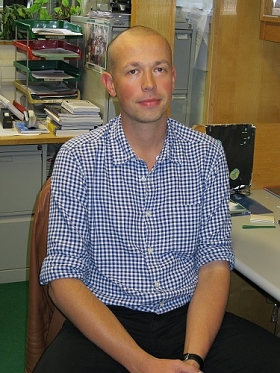
Mr Viktor Kis has joined Professor Peter Somogyi’s laboratory for a month long visit to collaborate with Dr. Ruth Faram, who just completed her DPhil with Dr. Jeff McIlhinney on the Copine-6 enriched interneurons of the forebrain.
Vikor has recently completed a Masters degree at the Department of Anatomy, Cell- and Developmental Biology Eötvös Loránd University of Science, Budapest, and is in the final stages of preparing his PhD thesis. He gave a seminar earlier in the Unit on the structure of the Drosophila brain.
- Unit1 Oct 2013

We are very pleased to welcome Abhilasha Joshi to the Unit for a postgraduate degree at the University of Oxford and registered at Brasenose College. She has joined Professor Somogyi’s laboratory and her co-supervisor is Dr David Dupret. Her research project “Behaviour and neuronal network state-dependent activity of identified neurons in the temporal cortex of the brain”. Abhilasha was awarded the Felix Scholarship, which is primarily aimed at Indian graduate students to help them to achieve their potential by coming to the U.K.
Abhilasha completed a Dual Degree BS_MS in biology from Indian Institute of Science Education and Research, Mohali where she went with a national level fellowship, the Kishore Vaigyanik Protsahan Yojana (KVPY, translated as National fellowships for students interested in pursuing research careers), which is given by the Government of India to promote research in basic sciences. Her master’s thesis research work was in “Evolutionary biology of aging and mate choice.”
In 2011, she attended a short discussion forum in UC Berkley under Dr. Terence Deacon to understand the evolution of language. In 2012, she joined Dr. Loren Frank’s lab at UC San Francisco for a summer internship where she studied decision making in rats.
Abhilasha has learnt two Indian classical dance forms - Bharatanatyam and Kathak. She has also worked with migrant construction labor community in India and is a frequent trekker.
Nandy, B., Abhilasha J., Zeeshan, S.A., Sen, S., Prasad, N.G. Degree of adaptive male mate choice is positively correlated with female quality variance. Sci. Rep. 2, 447; (2012).
- Unit30 Sep 2013
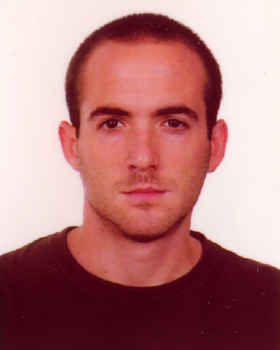
Dr. Miguel Valencia has returned to the Unit to continue an on-going collaboration with Dr. Juan Mena-Segovia on the interaction between the cortex and subcortical structures across brain states and during chronic dopamine depletion. Miguel is a staff scientist at the Centre for Applied Medical Research (http://www.cima.es/areas/neurosciences), from the University of Navarra, Spain, where he works on the interaction of basal ganglia structures during health and disease.
- Unit14 Aug 2013
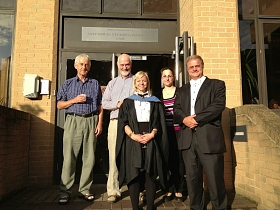
Our Congratulations go to Ruth, who successfully defended her thesis entitled “A Molecular, Anatomical and Developmental Account of Copine -6 Protein Expression in the Rodent Brain” yesterday. Her examiners were Dr Nicoletta Tekki-Kessaris (Reader in Developmental Neuroscience, UCL) and Prof Zoltan Molnar (Prof. of Developmental Neuroscience, University of Oxford). Ruth is pictured outside the Anatomical Neuropharmacology Unit with her examiners, her supervisor Jeff McIlhinney and the Unit Director Prof Peter Somogyi.
- External31 Jul 2013
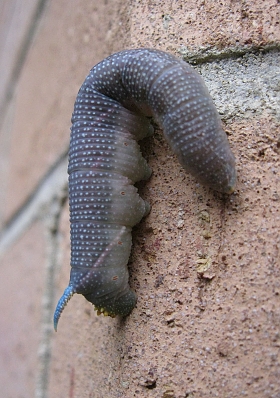
Our wildflower meadow is attracting new talent to the Unit. This morning a Lime Hawk Moth caterpillar was found on the wall just next to the front door of the Unit. Although this species normally feeds on the leaves of Lime trees (such as those on South Parks Road), it is known to feed on birch too, so probably grew up in our silver birches.
Its size and grey-purple colouring (rather than grey-green) suggests it is fully grown, and ready to pupate. Based on this assumption, it was relocated to a dry branch of the magnolia bush, from where it could easily reach the ground suitable for it to pupate in (the soil there is covered in loose bark chippings, and should be easy to dig into).
The last photo shows a pair of adult moths photographed by Ben Micklem in his garden. The lower moth is the male and is releasing scent (tail curled upwards), and the female is the larger one above.
- External26 Jul 2013
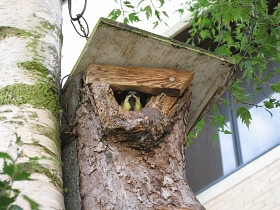
The productive Great Tits nesting in a box in a silver birch above the wildflower meadow have successfully raised a second brood that fledged this morning. One of the chicks was found on the ground, but please keep your distance from it, to reduce stress on the chick, parents and prevent drawing predators' attention to it.
- Unit19 Jul 2013
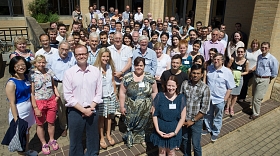
On the 19th of July, we celebrate Paul Bolam's 60th Birthday with a special Unit Science Day, with guests including many of his collaborators, past students and post-docs. The presenters also included previous member's of Prof. Bolam's group, and collaborators from across the globe. The afternoon talks were updates on ongoing projects by Unit members. In all there were 15 talks, and 9 posters were also presented and discussed.
The science was followed by dinner in the hall at Wadham College.
- Unit15 Jul 2013

The MRC Unit was well represented in this year’s Paton Prize Talks, with three D.Phil. students (Federica Vinciati, Colin McNamara and Marie Dalzell) each giving a presentation about their ongoing thesis research. Federica, a second-year student in the Magill Group, was jointly awarded this year’s Paton Prize for her presentation entitled “In vivo electrophysiological properties of neurochemically-identified striatal neurons in dopamine-intact and Parkinsonian rats”.
The Paton Prize is named in honour of the late Professor Sir William Paton, former Head of the University Department of Pharmacology, and is awarded annually on the basis of general research excellence, the quality of presentation and the ability to deal with the adjudicators’ questions.
- Unit15 Jul 2013
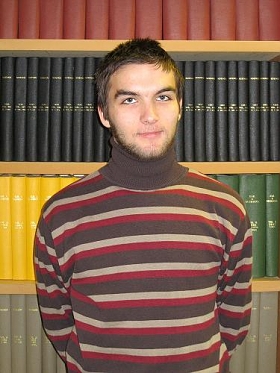
We are delighted to welcome back István Lukács, a visiting medical student from the Medical University of Targu Mures, Romania where he finished his 3rd year, to Prof. Peter Somogyi's laboratory for 2 month visit. István was a previous winner of Oxford Cajal Scholarship scheme. He joins a project on mouse models of neurodegenerative human brain disorders and carries out molecular and microscopic analyses on mouse brains.